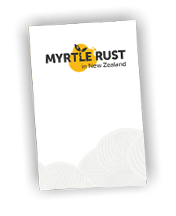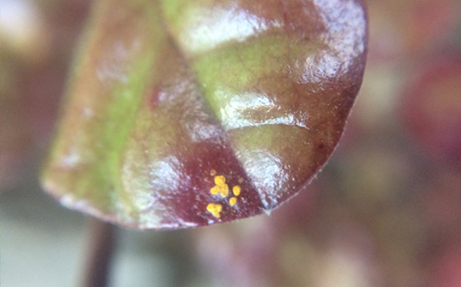Help slow the spread of myrtle rust
Myrtle rust resource for gardeners - Manaaki Whenua Landcare Research (pdf 225 KB)
Myrtle rust resource for gardeners
Advice for myrtle rust removal (fungicides) (pdf 1.3 MB)
Advice for myrtle rust removal (fungicides)
Field guidelines for arborists (pdf 1.4 MB)
Field guidelines for arborists
Myrtle rust susceptible host species (pdf 439 KB)
Myrtle rust susceptible host species
Resources for schools
The Science Learning Hub – Pokapū Akoranga Pūtaiao links New Zealand scientists with school students, teachers and community audiences. Content is developed by teachers, teacher educators and multimedia experts working closely with New Zealand’s scientists, technologists and engineers.
Their myrtle rust page has information specifically designed for schools.
Reducing impacts through plant selection – advice for plant growers and buyers (pdf 275 KB)
This advice is for those who grow, supply, specify or buy plant stock, so that they can be informed of the risks associated with growing susceptible Myrtaceae, and recommend alternatives to increase disease resilience.
Resource for garden retailers and landscapers (pdf 387 KB)
Myrtle Rust - Garden Retail and Landscape Guidance
New Zealand Plant Producers resources for nurseries
NZPPI resources for nurseries
Resources for restoration planters (pdf 917 KB)
If you are planning large-scale planting and restoration programmes using myrtle plants, follow the advice in Biosecurity New Zealand's guide.
This guide was developed in collaboration with the Department of Conservation and local council representatives.





